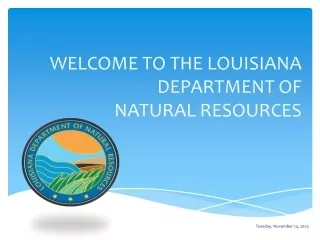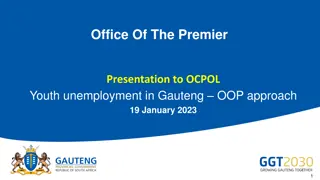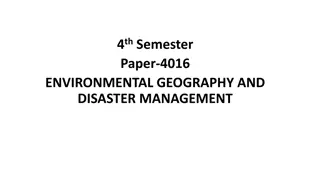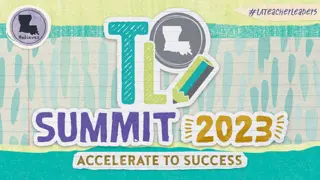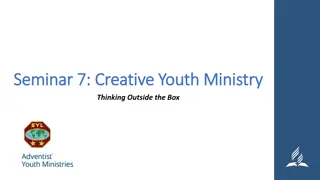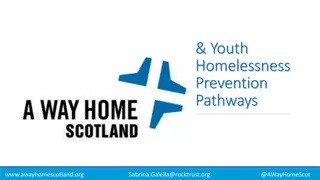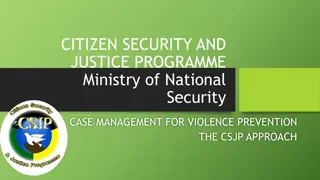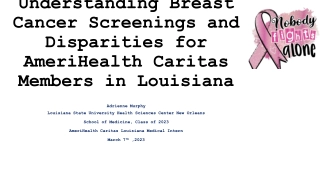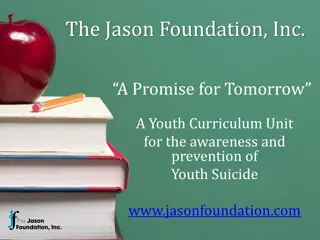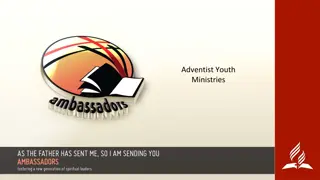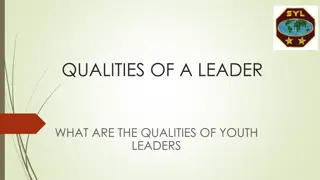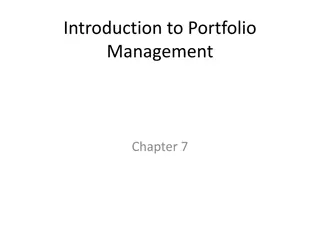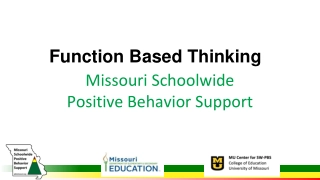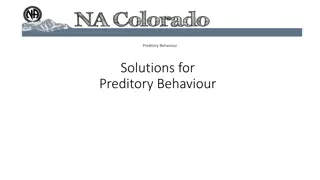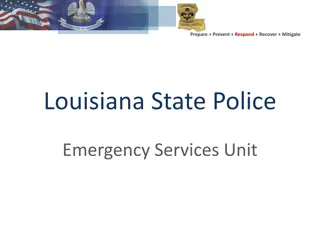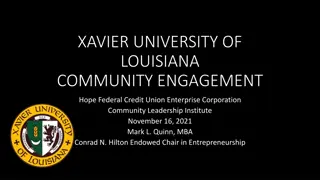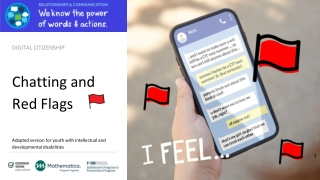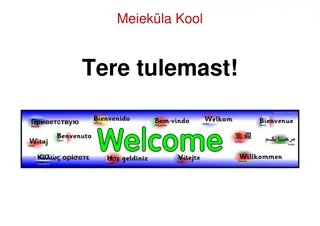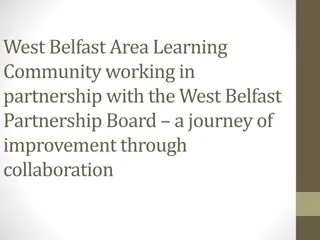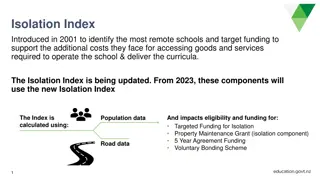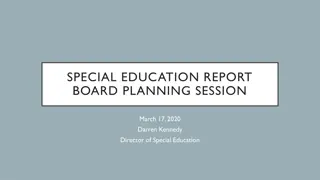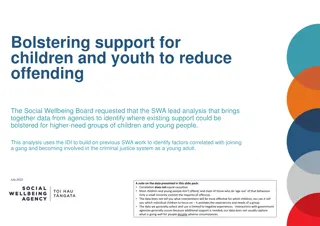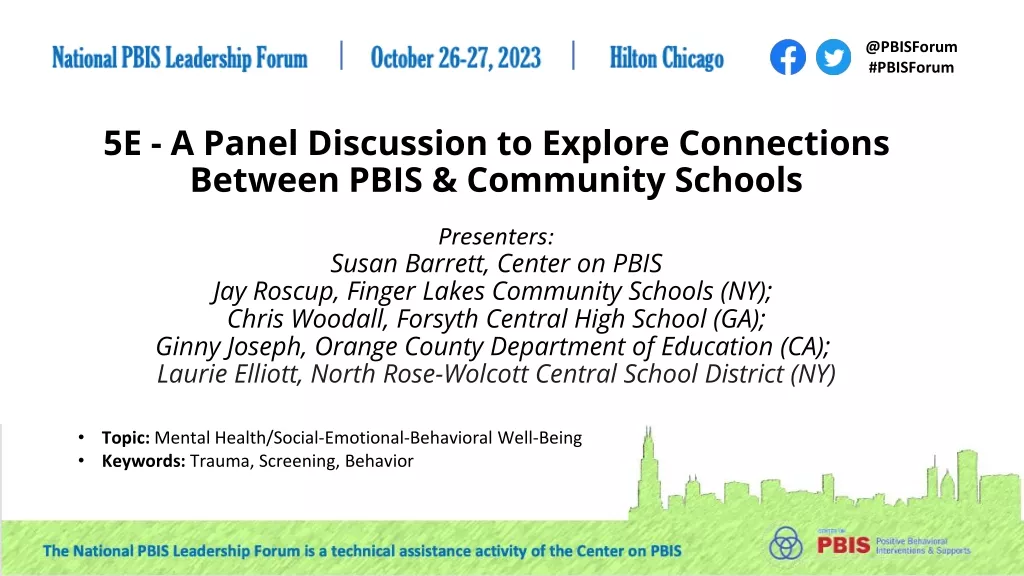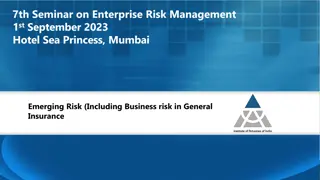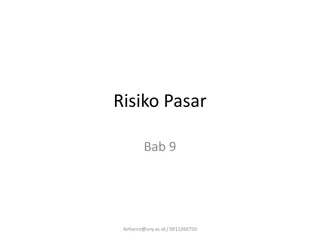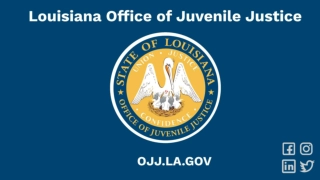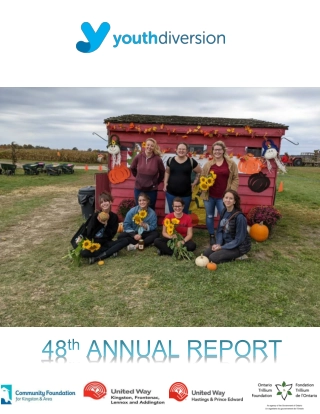Youth Risk Behavior in Louisiana Schools
Louisiana student behaviors from YRBSS data include carrying guns, fights, bullying, and suicide attempts. Student perspectives on mental health importance in creating safe school environments. Efforts to promote resources for better mental health access and support. Popular
Download Presentation

Please find below an Image/Link to download the presentation.
The content on the website is provided AS IS for your information and personal use only. It may not be sold, licensed, or shared on other websites without obtaining consent from the author. Download presentation by click this link. If you encounter any issues during the download, it is possible that the publisher has removed the file from their server.
E N D
Presentation Transcript
Youth Risk Behavior Surveillance System (YRBSS) Question Louisiana 2021 United States 2021 Carried a gun 9.9 3.5 10.0 6.6 Threatened or injured with a weapon on school property In physical fight 29.3 18.3 Physical fight on school property 9.0 5.8 Ever saw someone get physically attacked, beaten, stabbed, or shot in their neighborhood 30.3 19.9 Bullied on school property 18.5 15 Attempted Suicide 17.6 10.2 2
Student Perspective: School Safety and Mental Health Vaishnavi Kumbala Student at Haynes Academy
Student Perspective: School Safety and Mental Health Served as a Leadership Team Member of the Louisiana Student Behavior, Mental Health, and Discipline Task Force Represent District 1 on the Louisiana Legislative Youth Advisory Council Student mental health is vital, especially given the stressors that many students face Creating resources is important in order to support students Oftentimes, there is a gap in accessibility for student mental health resources, as sometimes there are existing resources that are not widely known about Noticed this as a student Promoting resources more widely in accessible locations like schools, school websites, libraries, and counselors offices Ensures more people can benefit 4
Student Perspective: School Safety and Mental Health Supporting mental health is important in creating and maintaining safe school environments Creating an atmosphere where students feel comfortable talking to teachers, school social workers, or other school officials about what may be on their minds Voicing this support and letting students know their classroom is a safe space to talk This can go a long way Actively checking in with students 5
Saplings: Cultivate Happiness In order to address student mental health in schools and help create healthier and safer school environments, I developed an app called Saplings Mentioned in The Wall Street Journal, FEMA website, and ABC News Provides a wide range of interactive, engaging wellness resources targeted towards teens Used in schools through flyers in hallways and counselors offices, presentations, and assemblies Working to bring Saplings into classrooms Such as the Guiding Journaling feature being a bell-ringer activity at the start of English classes Students being able to practice writing, while simultaneously engaging in an activity to de-stress and feel energized before the start of class. 6
Slides for Keesha Simmons start here - 3-5 slides per person please
Slides for start here Elnora Salone - 3-5 slides per person please
Restorative Practices: Another Tool to Solve Problem Behaviors & Heal Relationships in Schools
Restorative Practices (International Institute for Restorative Practices, IIRP) Restorative Justice is theory of justice that emphasizes broken rules/laws as harm done to communities, and seeks to repair the harm and restore the relationship by bringing together those most affected by the wrongdoing to address the needs and responsibilities for making things right. Restorative practices build, maintain, and repair relationships Goal is to develop community and to manage conflict by repairing harm and restoring relationships Restorative practices are proactive as well as reactive and serve to build relationships and shared school culture/climates in which all members of a school community feel valued and connected (students, teachers, parents, staff, etc). Only 20% of a school s restorative practices respond to conflict and inappropriate behavior. This approach cultivates a school climate in which negative interactions and destructive responses to behavior are less likely to occur. Additional tools to other behavioral teaching approaches which can reduce ISS & OSS 11
Commitments & Benefits of Restorative Practices Of the Region 1 schools trained in Restorative Practices, a small group are currently in their early stages of implementation (with fidelity) but are showing promising shifts in their qualitative and quantitative data (possible funding through School Climate Transformation grant). Schools using Restorative Practices with fidelity in Region 1 have closed disproportionate minority contact gaps, increased 4-year graduation rates, successfully addressed truancy issues, and decreased suspension, expulsion, and arrests. Success depends upon top-down support (at the district-level i.e. superintendent and school board, as well as school level i.e. principal and administration), a district/LEA-wide commitment to the work (putting Restorative Practices coordinators on-site at every school who is implementing), and allowing for the work to be slow (most schools need a one-year ramp-up period and 3-4 years of intense-support to become a restorative school site). 14
Brandon Wilks, LSSP, NCSP Nationally Certified School Psychologist PPSB Special Education Advisory Council (SEAC) Chair Webmaster & Membership Chair, Louisiana School Psychological Association (LSPA) Plaquemines Parish School Board bwilks@ppsb.org (504) 595-6070
School Based Mental Health Services In Lincoln Parish
PRE AND POST COVID RESPONSE TO MENTAL HEALTH PRE-COVID As a district the Lincoln Parish school board office has accepted and supported the need for increased mental health services for the past several years. We have been tracking mental health data for over a decade and our procedures and training for risk assessments and mental health support have continued to grow. Slowly, we have hired more and more qualified personnel to provide increased support in our schools. Partly, this was in response to requirements from LDOE and a documented need in our district. Pupil Appraisal was heavily leaned on to provide mental health support by our school psychologists and social workers. Some school leaned on their guidance counselors as well, but not all schools have those in place. 17
PRE AND POST COVID RESPONSE TO MENTAL HEALTH POST-COVID As a district the decision was made by our superintendent to hire more qualified mental health counselors so we have a part time or full time presence at every school in our district. LDOE also required that districts initiate Student Well-Being Committees and Student surveys assessing the mental health and well-being of students. Pre-COVID we had 5 full time mental health professionals in our schools going to various schools to work with students. Post-COVID 5 additional full time mental health professionals were hired. There are 12 schools in the Lincoln Parish district - approximately 5600 students. 10.5 mental health counselors are in place to support the needs of our students (LPC s or LCSW s). In addition, our district has 3 full time school psychologists, 1 school psychologist intern, and 2 social workers (LCSW s) in Pupil Appraisal to offer additional support. 18
What else is Lincoln doing that may be different from other districts? Panorama Education https://www.panoramaed.com/ Lincoln has utilized this tool for our student well-being surveys that we adminsiter 2-3 times per year to better understand where are students are coming from and what they are dealing with. The teacher completed surveys for students grades K-2 focus on: Grit, Self-Management, Self-Awareness, Self-Efficacy, Learning Strategies, Classroom Effort, Social Perspective-Taking, Emotional Regulation & Engagement The student completed surveys for students grades 3-12 focus on: School Climate/Safety Challenging Feelings/Emotional Regulation/Supportive Relationships Once survey data is collected and analyzed (average completion rate for 22-23 was 83%) threat assessments are conducted, individual and small group referrals for counseling are made, as well as data based decisions around prescribed Social Emotional Learning (SEL) for students based on their answers to the surveys. 19
Student Well-Being and Positive Behavior Intervention Support (PBIS)/Multi-Tiered Support Systems (MTSS) In Lincoln we have paired these two LDOE requirements and made one committee at every school to ensure we have the right individuals looking at discipline data and brainstorming about what tier of support a student may need. We are working hard to be creative and think outside of the box when it comes to positively supporting appropriate student behaviors while giving the students the tools they need to navigate the school environment both academically and socially. This committee is viewed as the School Building Level Committee (SBLC) for Behavior. 20
Mental Health Counselor Role The role of the Mental Health Counselor (MHC) is different than that of any other in the district. As a result, a new job description was written specifically for that position. The MHC is expected to:(these are just a few of the expectations) Conduct threat assessments (but they are not the only ones on campus who conduct these assessments - a team is trained at every school) Provide individual and small group counseling Provide Social Emotional Learning (SEL) to classes and prescribed groups on their campus Help with crisis situations Expected to have a digital presence - some have a page on the school s webpage, a Google Classroom where SEL lessons are pushed out, QR codes have been developed for students to request time with the MHC, and more 21
Becky Stutzman, LCSW-BACS, C-SSWS School Social Worker Pupil Appraisal/Mental Health Coordinator Lincoln Parish Schools Ruston, LA rstutzman@lincolnschools.org 318-255-8451 ext. 2141
School-Based Health Centers Supporting Student Mental Health and School Safety
Adolescent School Health Program: School-Based Health Centers Screen for Risky Behaviors Psychosocial Evaluations Develop Treatment Plans Individual Counseling Group Counseling Family Counseling Refer students with greater needs Annual Exams Sports Physicals Illness and Injury Immunizations Management of Chronic Conditions STI Testing Abstinence Counseling Preventive Health Screenings 24
The CDCs Categories of Youth Risk Behavior Behaviors that contribute to unintentional injuries and violence. Sexual behaviors related to unintended pregnancy and sexually transmitted infections, including HIV infection. Alcohol and other drug use. Tobacco use. Unhealthy dietary behaviors. Inadequate physical activity. 25
Screening for Risk in SBHCs What: Valid and reliable screening instrument When: During annual well child visit, upon referral for behavioral health services Why: Identify risk behaviors Possible Solutions Refer students to the SBHC prior to suspension/expulsion Refer students to the SBHC with frequent absenteeism Utilize SBHC behavioral health provider to share information with students about the services Utilize SBHC behavioral health provider during crisis 26
Risk Screening Data FY 23 totals as of 5/10/23 27
Adolescent School Health Program Faith Boudreaux M.Ed.; Program Manager Faith.Boudreaux@LA.gov Contact #: 504.568.8164





